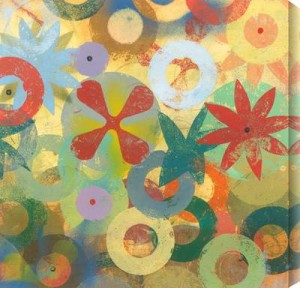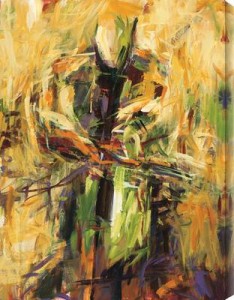Putting Brush to Canvas: A Variety of Techniques
As we’ve discussed here, canvas is the most popular and, in our estimation, the absolute best painting surface because it is well-suited to the demands of painting media – most notably holding and displaying paint. Because of its perfect nature for painting, a huge amount of techniques have been developed over the years for applying that paint to the canvas. While it would be impossible to list all of the techniques in the world, here are a few very interesting styles of painting that we find give spectacular results when combined with a high-quality canvas.
One technique that’s interesting to note is not exactly a painting technique, but a preparatory one. Despite it’s greatness, when canvas was first coming into widespread use, many Renaissance painters used extreme measures to mask the natural characteristics of canvas, mimicking the appearance of flat, smooth-textured (and more expensive!) surfaces, such as wood panels. As canvas use gained prominence, it became more and more acceptable and common to allow the characteristics of canvas and paint to show through, influencing the development of techniques and artwork.

Whereas some painters strived for flatness and near-photographic realism, others began to relish the textures created by thick layers of paint. Impasto uses large rough brushtrokes, full of ridges and globs, to create a textured surface. This technique plays with the way light falls on a painting, creating varying shadows depending on how you view it. Impasto is also an extremely expressive technique in that it shows the actions and intensity of the painter, and can be clearly seen in the works of artists such as Vincent Van Gogh. Another technique employing a rough style, though with much less paint than impasto, is dry brush — a technique in which all the water or oil is squeezed out of the brush before working on the canvas, creating uneven and scratchy brushstrokes.
For those that do prefer a smoother texture to their painting, wet-on-wet may be the technique for you. Also called alla prima (meaning first attempt), it involves, as the name suggests, applying wet paint on top of wet paint. The advantage of this is speed. Waiting on paint, especially oil paint, to dry can take days, weeks or longer depending on conditions, but it’s often necessary in order to prevent the layers of paint blending together — a potential disaster when working with small details. Alla prima painting exploits this blending, and a range of painters have harnessed the fluid qualities of the technique in their respective style — though it is perhaps best championed by the Impressionists, such as Claude Monet, who used the quick method to capture their immediate perceptions of a moment onto canvas.
Drip painting, loosely defined, involves a gap between the brush and the canvas when applying paint. It can be as simple as letting paint drop from above onto a waiting canvas, dancing around like Jackson Pollack, slinging paint onto an upright canvas and an array of other imaginative means (a certain scene from “The Big Lebowski” comes to mind). By creating a distance between artist and canvas, the technique embodies a sense of liberty from traditional painting styles and subjects — with less control, your painting can become more abstract and expressive.

While these days it may seem curious to see spray paint hanging on a wall rather than on the wall of a gas station or a boxcar, canvas is just as suited as brick for displaying the art form. Though it seems like a quintessentially modern style, the first airbrush was designed in the late 1800s, and spray paint cans were quickly put into production in the mid 1900s after the development of the aerosol can. Spray paint and airbrushes typically use compressed air to release a fine mist of paint, smoothly and evenly covering surfaces. Since the paint is applied in single-color layers, careful planning and a vision of the completed work is usually required with complicated designs, and the use of stencils and other tools allows for more precision and other effects.
If paint seems too boring or traditional a medium to apply to your professionally crafted canvas, look even further through history to the technique of encaustic. Encaustic is also called hot wax painting, and uses a mixture of colored pigments and heated beeswax in lieu of typical painting materials. As long as the mixture stays hot, it can be painted as well as sculpted onto your canvas, allowing for some truly unique creations. Because the mixture dries solid, you can also use it as a type of painterly glue in order to collage all sorts of materials into your work.
As you can see, there are a wide variety of techniques available to the painter that chooses canvas. These are only a few, and there are hundreds more just waiting out there for you to try on your own canvases. Whichever techniques you choose to work with, our custom stretched canvases are the ideal surfaces for both your masterpieces and experiments. We’d love to be a part of your creation process, and we know you’ll love our work just as we know we’ll love yours.